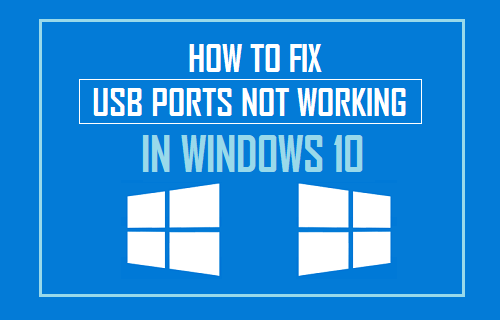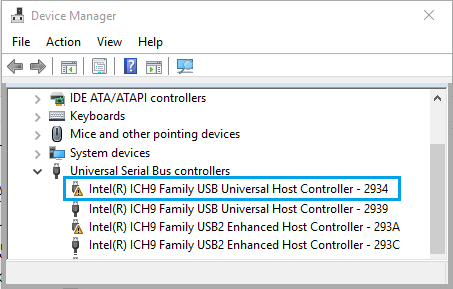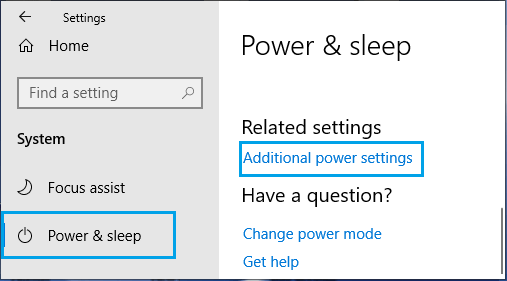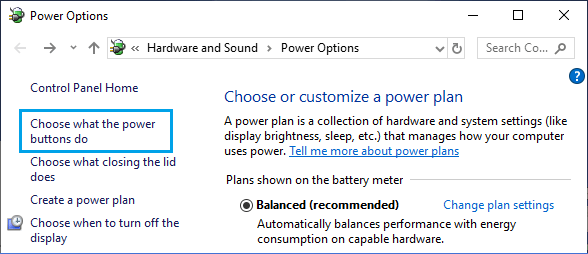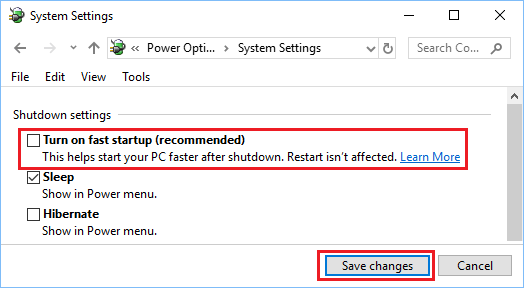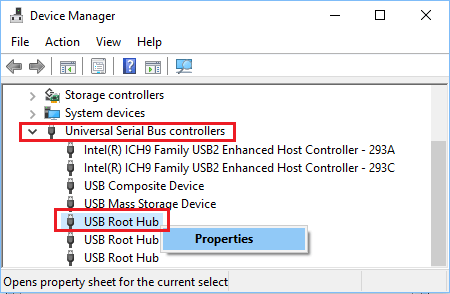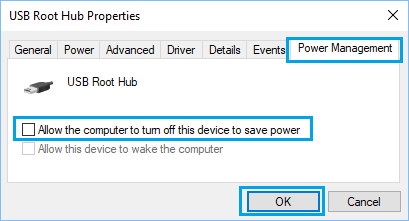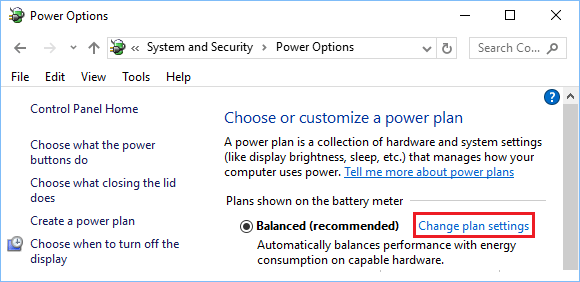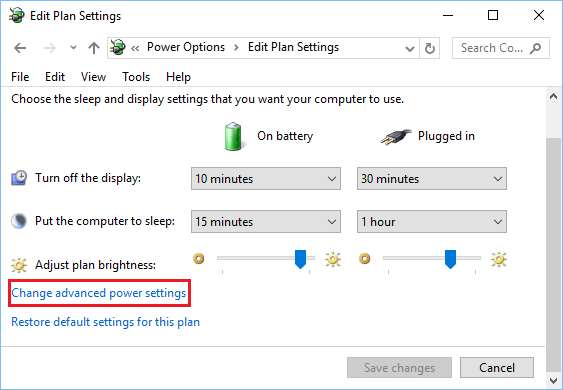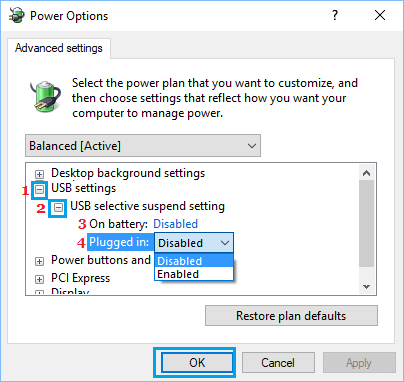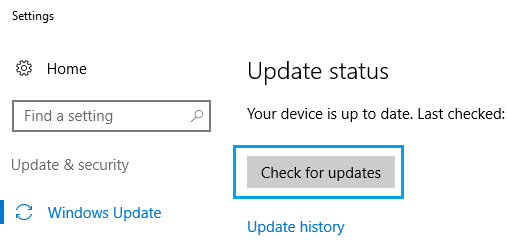USB Ports Not Working in Windows 10
The problem of USB ports not working in Windows 10 could be due to various reasons, ranging from outdated or corrupted driver software to Power Supply to USB Ports being shut off and other reasons. Before going ahead with troubleshooting steps, make sure that the problem is with the USB Port and not with the USB device that you are trying to connect to the computer. You can check and confirm this by plugging another device into the USB Port that is not working on your computer. If you find that the new device is also not working, it confirms that the problem is due to the USB Port.
1. Power Off Computer and Start Again
In certain cases, the problem of USB Ports by the simple act of shutting down the computer and restarting it back again. Simply, switch OFF the computer > Wait for 60 seconds > Restart the computer and you may be surprised to see the USB Port working.
2. Reinstall Faulty Device Drivers
A common reason for USB Ports not working in Windows 10 is due to the Drivers becoming outdated, corrupted or not loading during the startup process. Right-click on the Start button and click on Device Manager. On Device Manager screen, right-click on the USB Controllers with an exclamation mark and select the Uninstall option in the contextual menu.
Repeat the above steps for other USB Controllers with exclamation marks and Restart the computer. Once your computer restarts, Windows should automatically load the right drivers as required for USB Ports on your computer.
3. Disable Fast Startup
The Fast Startup feature in Windows 10 can sometimes lead to USB Device drivers not being properly loaded or skipped during the startup process. Go to Settings > System > select Power & Sleep in the left-pane. In the right-pane, scroll down and click on Additional Power Settings.
On the next screen, click on Choose What the Power Buttons Do option in the right-pane.
On the next screen, scroll down to “Shutdown Settings” and uncheck Turn on fast startup option.
Click on Save Changes button to save this Power Setting on your computer.
4. Change Power Management Setting for USB Root Hub
Windows computers have a default tendency to turn-off power supply to unused USB ports and this often lead to the problem of USB Ports not working on a Windows computer. Right-Click on Start button and select Device Manager in the WinX menu that appears. On device Manager Screen, right-click on USB Root Hub and click on Properties.
On USB Root HUB Properties screen, switch to Power Management tab and uncheck Allow the computer to turn off this device to save power option and click on OK.
If there are multiple USB Root Hubs, you need to repeat the above steps for them as well.
5. Disable USB Selective Suspend Setting
In case all the USB Ports are not working on your computer, you can disable Selective Suspend Power Setting for all the USB Ports on your computer. Go to Settings > System > select Power & Sleep in the left-pane. In the right-pane, scroll down and click on Additional Power Settings.
On Power Options screen, click on Change Plan Settings link located next to the current Power Plan.
On the next screen, select Change Advanced Power Settings link.
On Power Options screen, click on USB Settings > USB selective suspend setting and select the disabled option for “Plugged In” and also for “On Battery” (If you are using a Laptop).
Click on OK to save these Advanced Power Setting on your computer.
6. Check for Updates
See if an Update is available for your computer. If an update is available, Windows will also install the latest available drivers for USB Ports on your computer. Go to Settings Icon > Updates & Security > select Windows Update in the side menu and click on Check for Updates button.
Allow Windows to check for available updates and install them on your computer. In case updates are available, the latest available device drivers will also be installed on your computer.
How to Remove Startup Programs in Windows 10 How to Disable Face Detection & Biometrics in Windows 10
